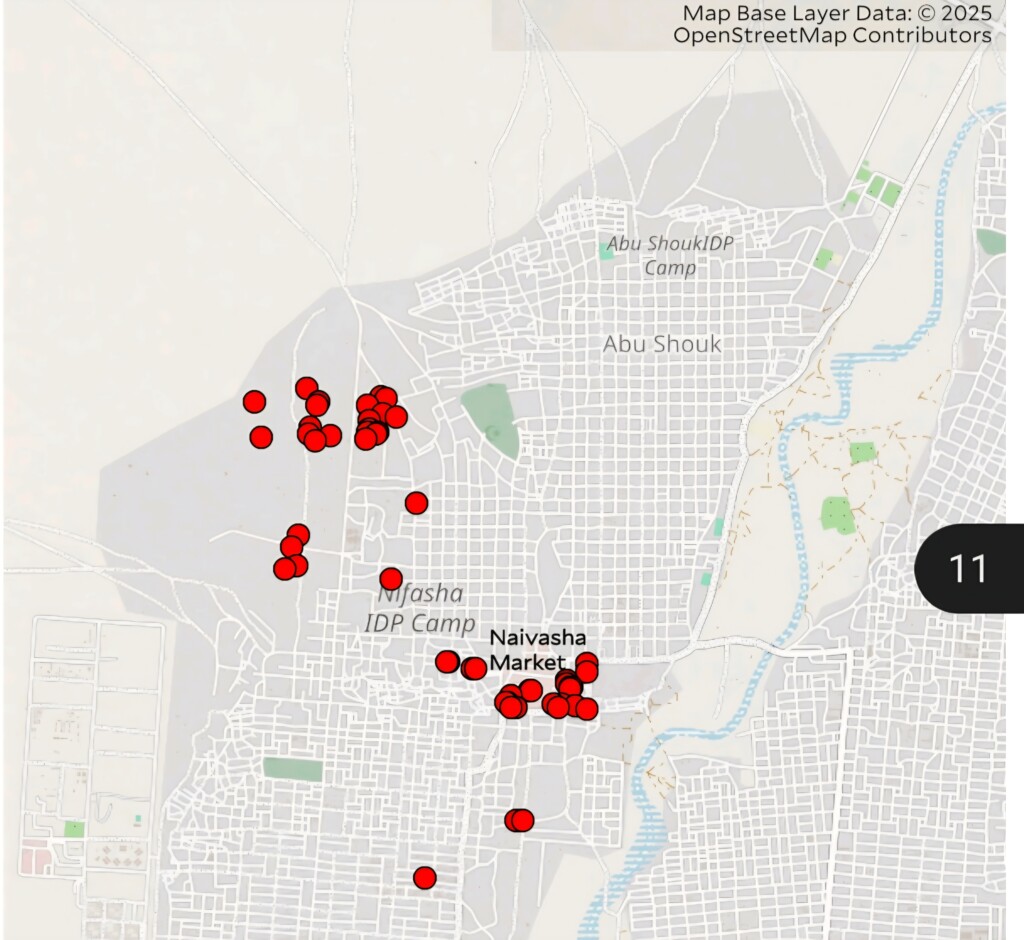Yale HRL: ’No safety or escape for civilians in North Darfur’

Satellite imagery shows over 50 munition impacts since 30 Aug, including 20 hitting Naivasha Market (Photo: Yale Humanitarian Research Lab)
In a recent report by the Yale School of Public Health’s Humanitarian Research Lab (HRL) they warned that civilians in El Fasher “have no safety in staying and no possibility of escape,” after documenting mass bombardments, rising fatalities, and the near-complete siege of the North Darfur capital.
Between 30 August and 10 September, satellite imagery confirmed more than 50 shelling incidents in Abu Shouk camp for displaced people, including 22 strikes on Naivasha Market. HRL assessed that the true figure is “a significant underestimate” given the density of the camp.
The laboratory also tracked a surge in fatalities, identifying 190 new graves in Al Rahma Cemetery in less than six weeks, alongside 50 additional burials near the former UNAMID base.
Open-source reports cited at least 18 people killed by artillery on 1 September and dozens more on 3 September, while 150 civilians required medical attention for conflict-related injuries between 31 August and 3 September. Children are reported to be dying in shelters from acute watery diarrhoea and hunger.
RSF siege and atrocities
The RSF has expanded its earthen berms by seven kilometres since late August, leaving only two small gaps in a 38-kilometre ring now encircling El Fasher. HRL linked the siege to widespread reports of “extrajudicial killings, detentions, abductions, looting, and extortion.”
Witnesses alleged RSF fighters kidnapped women and girls from homes and camps, and in some cases forcibly drew blood from captives, with fatalities reported after release.
With food, medicine, and clean water running out, residents have been reduced to eating ambaz, animal fodder, which itself is nearly exhausted. “People are starving from lack of food. Clean water is running out, if it has not already,” the researchers wrote.
Civilian infrastructure destroyed
Satellite evidence showed six destroyed military structures and damage to SAF facilities around El Fasher Airport, as well as bombardment of three mosques, the University of El Fasher, and the city’s water treatment plant. Local emergency rooms estimate that 98 per cent of clean water sources are now destroyed.
‘Time has now run out’
After a year of warnings, the researchers said the situation has reached a breaking point.
“For over a year, Yale HRL has been warning that time was running out for civilians in El Fasher. The mounting evidence of escalating fatalities, damage to what remains of El Fasher’s critical infrastructure, and the city’s steady encirclement… indicates that time has now run out,” the report concluded.
Read the full report here: SPECIAL REPORT – No Safe Haven: Bombardment of Abu Shouk IDP Camp and El-Fasher’s Increasing Berm Encirclement








 and then
and then